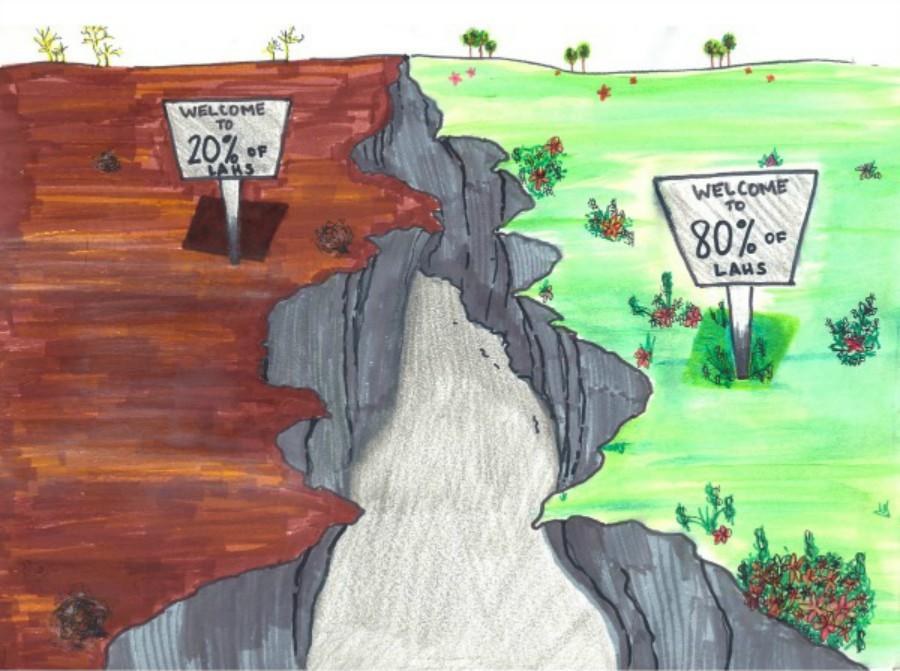The Gap: Exploring The Socioeconomic Gap At LAHS
Nineteen percent of students at LAHS qualify for the free or reduced price lunch program, placing nearly twenty percent of the student body at or near the poverty line. Graphic by Skyler Maeso.
At first glance, Los Altos High School (LAHS) is a public school that soars beyond many others of its type, both in the resources it offers and the achievements it brandishes. A newly installed turf football field sits in front a student parking lot shaded by rows of solar panels that power the 30-acre campus. The hallways are varnished with the community’s overwhelming success, sports awards and trophies of academic achievement glittering on the office shelves.
With such a vibrant shine, it’s easy to miss the numerous students who come from backgrounds that fall beneath the community’s average economic standing. Due to the way school boundaries are drawn, the student body is composed of a mixture of both intensely wealthy and less wealthy students. Wealth and success are very often lumped together through association, and knowing the student body’s economic composition, it becomes easier to see why that association is so commonly made.
This is what forms the economic gap at school. According to the Institute for Policy Studies, an economic gap “refers to the extent to which income is distributed in an uneven manner among a population.”
But what lie beneath the hard numbers often mulled over by analysts are the social implications of economic inequality, and this is what makes it a socioeconomic gap. Socioeconomic gaps largely include the unquantifiable differences in the way people live and the restriction on social opportunities for less affluent individuals.
In the following spread, The Talon examines the socioeconomic inequality at school, sharing student perspectives from both sides of the gap and looking at solutions to relieve students’ socioeconomic stress and better integrate our campus.




